
Hinchwick is a small village in Gloucestershire, England at grid reference SP145300 .
Hinchwick Manor was built by architect Charles Robert Cockerell in 1826. [1]

Hinchwick is a small village in Gloucestershire, England at grid reference SP145300 .
Hinchwick Manor was built by architect Charles Robert Cockerell in 1826. [1]

Sir Christopher Sydney Cockerell CBE RDI FRS was an English engineer, best known as the inventor of the hovercraft.

The Bank of England Building is a Grade I listed building located in Liverpool, England.
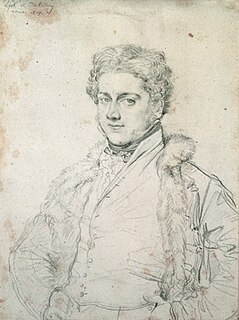
Charles Robert Cockerell was an English architect, archaeologist, and writer. He studied architecture under Robert Smirke. He went on an extended Grand Tour lasting seven years, mainly spent in Greece. He was involved in major archaeological discoveries while in Greece. On returning to London he set up a successful architectural practise. Appointed Professor of Architecture at the Royal Academy of Arts he served in that position between 1839 and 1859. He wrote many articles and books on both archaeology and architecture. In 1848 he became the first recipient of the Royal Gold Medal.

Samuel Pepys Cockerell (1753–1827) was an English architect.
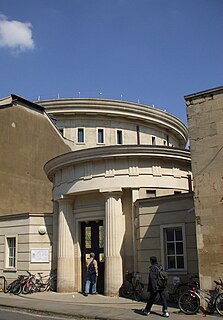
The Sackler Library holds a large portion of the classical, art historical, and archaeological works belonging to the University of Oxford, England.

The Dugald Stewart Monument is a memorial to the Scottish philosopher Dugald Stewart (1753–1828). It is situated on Calton Hill overlooking the city of Edinburgh and was designed by Scottish architect William Henry Playfair. It was completed in September 1831.
The year 1833 in architecture involved some significant events.

Sezincote House is the centre of a country estate in Gloucestershire, England. The house was designed by Samuel Pepys Cockerell, built in 1805, and is a notable example of Neo-Mughal architecture, a 19th-century reinterpretation of 16th and 17th-century architecture from the Mughal Empire. At the time of its construction, British India was becoming the "jewel in the crown" of the world's largest empire.
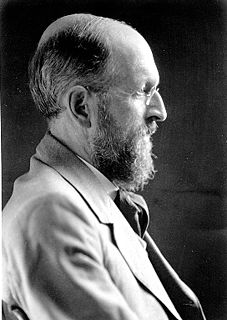
Theodore Dru Alison Cockerell (1866–1948) was an American zoologist, born at Norwood, England, and brother of Sydney Cockerell. He was educated at the Middlesex Hospital Medical School, and then studied botany in the field in Colorado in 1887–90. Subsequently, he became a taxonomist and published numerous papers on the Hymenoptera, Hemiptera, Mollusca and plants, as well as publications on paleontology and evolution.

St. Bartholomew-by-the-Exchange was a church and parish in the City of London located on Bartholomew Lane, off Threadneedle Street. Recorded since the 13th century, the church was destroyed in the Great Fire of 1666, then rebuilt by the office of Sir Christopher Wren. The rebuilt church was demolished in 1840.
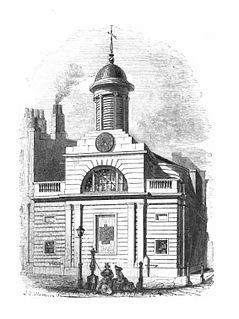
St Martin Outwich was a parish church in the City of London, on the corner of Threadneedle Street and Bishopsgate. Of medieval origin, it was rebuilt at the end of the 18th century and demolished in 1874.

Lothbury is a short street in the City of London. It runs east-west with traffic flow in both directions, from Gresham Street's junction with Moorgate to the west, and Bartholomew Lane's junction with Throgmorton Street to the east.

The Former Bank of England building at 82 King Street, Manchester, is a historic banking building. It has been recognised as a Grade I listed building, maintained by Manchester City Council. It was designed by Charles Robert Cockerell and constructed in the 1840s, being completed in 1846.

Paxton's Tower is a Neo-Gothic folly erected in honour of Lord Nelson. It is situated on the top of a hill near Llanarthney in the River Tywi valley in Carmarthenshire, Wales. It is a visitor attraction that can be combined with a visit to the nearby National Botanic Garden of Wales. Its high location provides views over the Botanic Gardens and the Tywi valley. The tower, a grade II* listed building, is under the care of the National Trust.
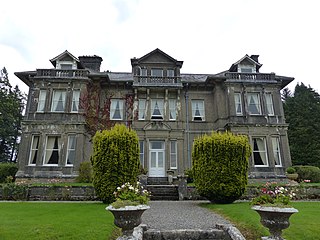
Clonalis House, Castlerea, County Roscommon, Ireland, is the ancestral home of the O'Conor Don, who is a direct descendant of the last High King of Ireland, Ruaidrí Ua Conchobair.
Frederick Pepys Cockerell was a British architect. He was the second son of Charles Robert Cockerell, also an architect, whose favour for French architecture and sculpture in architecture was a major influence on Frederick.
Blessingbourne House is a large Elizabethan style manor-house situated in parkland near Fivemiletown in County Tyrone, Northern Ireland.

Daylesford House is a Georgian country house near Daylesford, Gloucestershire, on the north bank of the River Evenlode near the border with Oxfordshire. It is about 5 miles (8.0 km) east of Stow-on-the-Wold and 5 miles (8.0 km) west of Chipping Norton. The village of Daylesford lies nearby to the west, Adlestrop to the north, Cornwell to the east, and Kingham to the south,
Sir Charles Cockerell, 1st Baronet was a Somerset-born Englishman who prospered as an official of the East India Company (EIC) and became a politician. He sat in the House of Commons for most of the period between 1802 and 1837, sitting for five different constituencies.
![]()
| This Gloucestershire location article is a stub. You can help Wikipedia by expanding it. |